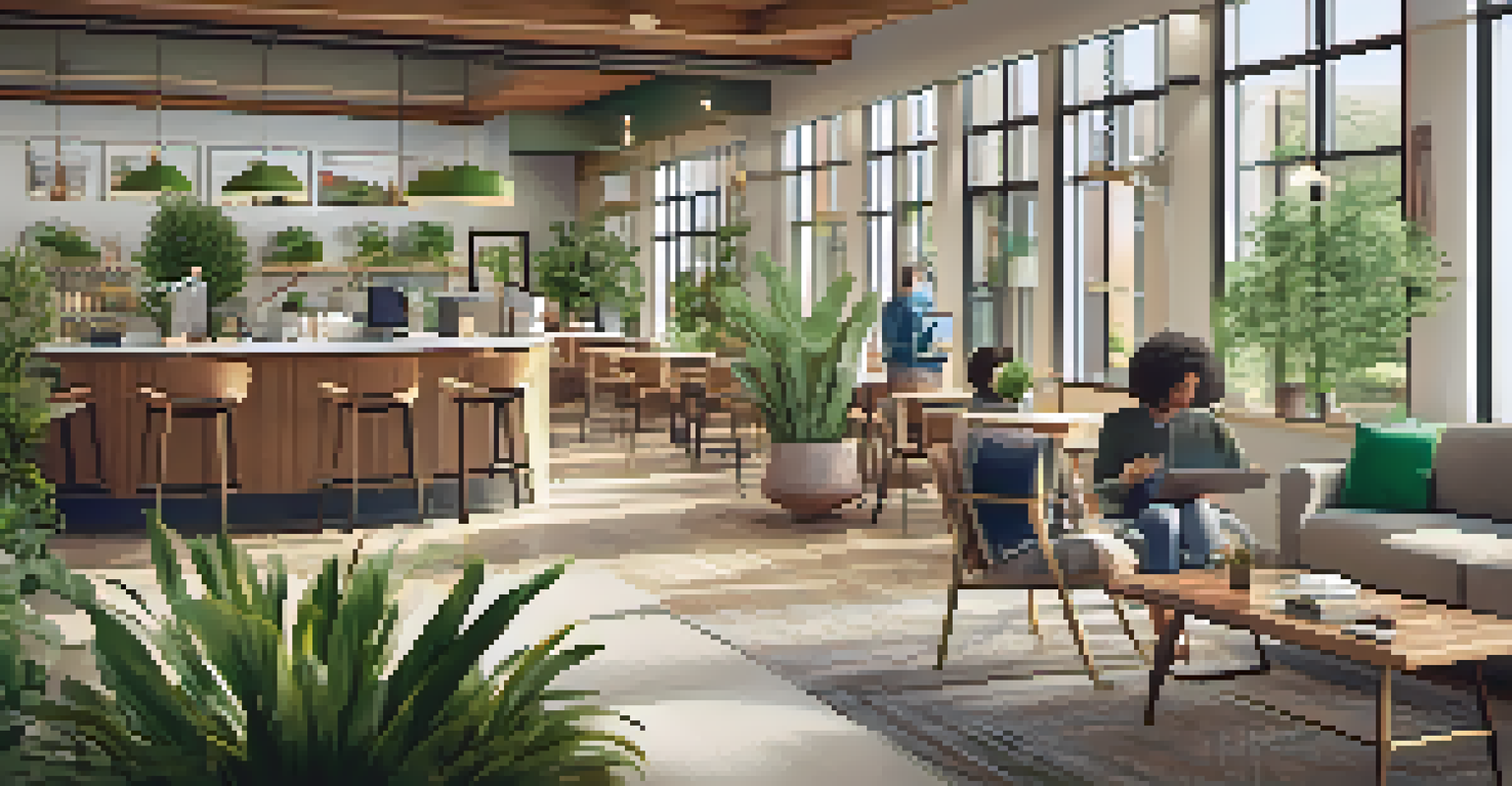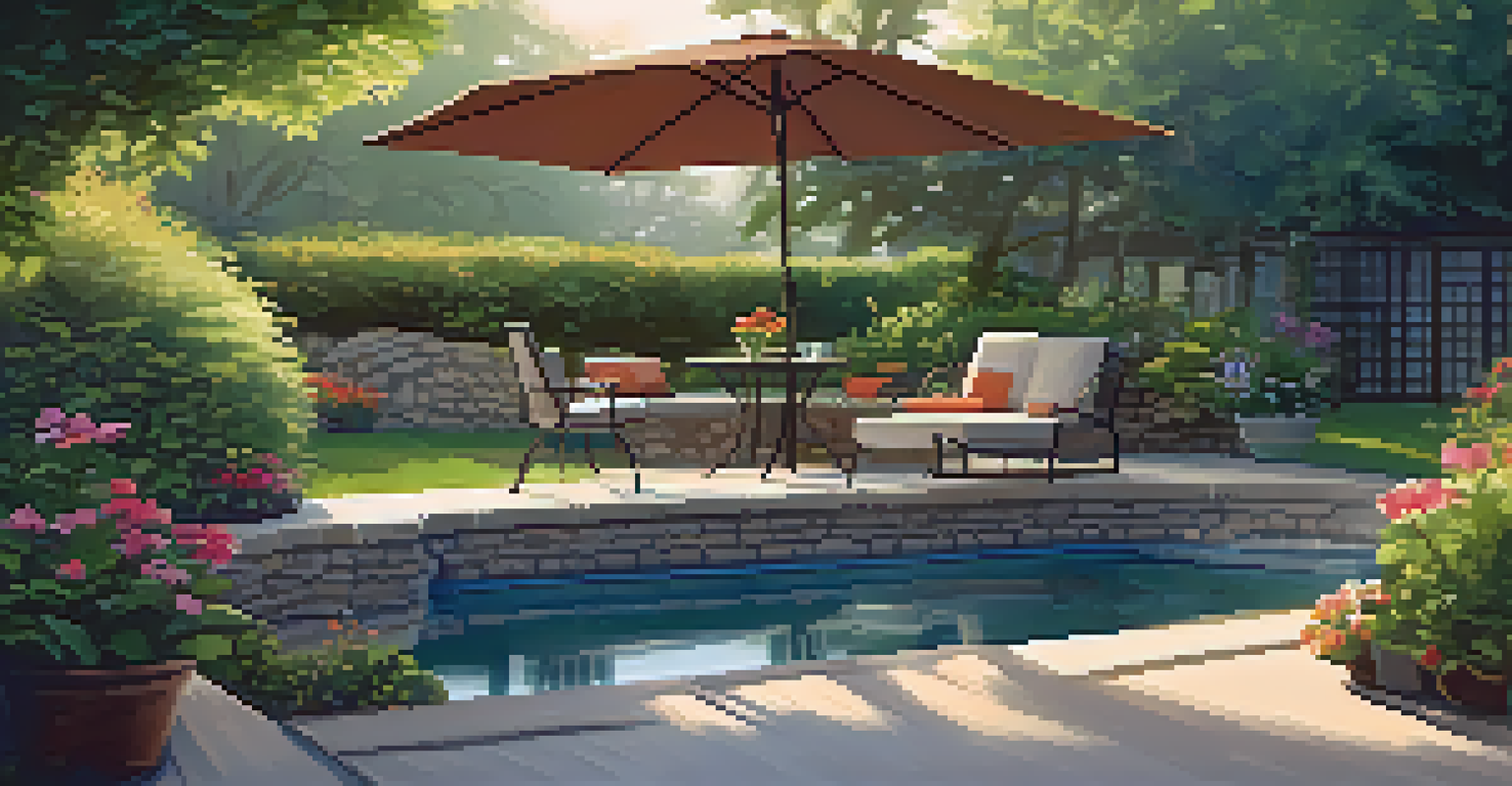Remote Work's Role in Shaping Future Housing Developments

The Rise of Remote Work and Its Impact on Housing Demand
The shift to remote work has changed the way we view living spaces. As more professionals embrace flexible work environments, the demand for housing in urban centers is starting to decline. Instead, people are looking for homes that offer a balance of comfort and functionality, often in suburban or rural areas.
Remote work offers individuals the freedom to choose where they live, leading to a reimagining of housing markets and community spaces.
This trend has created a unique opportunity for developers to rethink their projects. Properties that once catered to the hustle and bustle of city life are now being reimagined to include home offices, dedicated workspaces, and community areas that foster collaboration. These features are becoming essential as people prioritize both work and leisure.
Ultimately, the appeal of remote work is reshaping housing markets across the country. It’s no longer just about having a roof over your head; it’s about creating a space that enhances your lifestyle, offering both a productive environment and a sense of community.
Designing Homes for the Remote Worker
As remote work continues to gain traction, home designs are evolving to accommodate these changes. Features like open floor plans are giving way to more defined spaces that can serve dual purposes, such as a guest room that also functions as an office. This flexibility is key for homeowners who need to maximize their space.

Moreover, high-speed internet access is becoming a non-negotiable feature in new developments. Builders are now prioritizing connectivity, ensuring that homes are equipped with the latest technology to support seamless remote work. This shift highlights the importance of creating environments that cater to the digital needs of residents.
Remote Work Shifts Housing Demand
The rise of remote work is driving people to seek homes in suburban and rural areas, leading to a decline in urban housing demand.
Additionally, outdoor spaces are also being integrated into designs. Balconies, gardens, and patios are not just for leisure anymore; they are essential for taking breaks during long work-from-home days. The idea is to create a holistic living experience that promotes productivity while ensuring comfort.
The Importance of Community in Remote Work Housing
With remote work isolating many individuals, the sense of community has never been more crucial. Developers are beginning to incorporate communal spaces in housing projects, such as co-working areas, fitness centers, and social lounges. These spaces help foster interaction among residents, combating the loneliness that can accompany remote work.
The future of housing will be defined by flexibility and adaptability, as homes must cater to the evolving needs of remote workers.
Creating a vibrant community also means integrating amenities that encourage social engagement. For example, farmers' markets, outdoor movie nights, and community gardens can help residents connect, share experiences, and build relationships outside the virtual world. People are looking for neighborhoods that feel like home, not just a place to live.
This emphasis on community is reshaping how future housing developments are planned and marketed. Buyers are increasingly interested in the lifestyle a neighborhood offers, which includes not only the physical home but also the social aspects of living there.
Sustainability: A Growing Priority in Housing Developments
As remote work becomes more prevalent, there’s a growing awareness of sustainability in housing developments. Many buyers are looking for eco-friendly features, such as energy-efficient appliances, solar panels, and sustainable materials. This trend is not only beneficial for the environment but also appealing to cost-conscious homeowners.
Developers are responding by incorporating green building practices in their projects. These include using recycled materials, maximizing natural light, and creating energy-efficient designs that reduce utility costs. Such practices are becoming a selling point that attracts eco-conscious buyers.
Community Spaces are Essential
Developers are incorporating communal areas in housing projects to foster social interaction and combat the isolation of remote work.
Furthermore, sustainable developments often include green spaces and community gardens, enhancing the overall living experience. This connection with nature can be incredibly beneficial for remote workers, providing a peaceful retreat from the demands of their jobs.
Remote Work's Effect on Urban vs. Suburban Housing Trends
The remote work revolution is creating a noticeable shift in housing preferences between urban and suburban areas. Many professionals are opting to leave crowded cities for quieter suburbs, where they can enjoy larger living spaces and more affordable prices. This is leading to a decline in demand for high-rise apartments and an increase in single-family homes.
As a result, many urban developers are reimagining their projects to attract residents who may not want to live in high-density areas. This includes creating mixed-use developments that combine living, working, and leisure spaces in one location, making urban living more appealing even as people seek out more space.
On the other hand, suburban developers are capitalizing on this trend by offering homes that cater to remote workers. Properties with home offices, spacious backyards, and proximity to nature are becoming highly sought after, indicating a significant shift in the housing landscape.
Challenges Developers Face with Shifting Housing Demands
While the rise of remote work presents exciting opportunities, it also brings challenges for developers. One of the main hurdles is anticipating the evolving needs of remote workers and creating spaces that can adapt over time. Designing homes that are both functional and flexible requires innovative thinking and a deep understanding of current and future trends.
Moreover, developers must navigate changing regulations and zoning laws that can affect the types of projects they can undertake. As more people move to suburban areas, local governments may need to adjust their policies to accommodate the demand for new housing, which could create delays and complications.
Sustainability Gains Importance
Eco-friendly features and sustainable practices are becoming key considerations for buyers and developers in the evolving housing market.
Additionally, the competition in the housing market is intensifying. Developers are not only competing with each other but also with existing homeowners who are selling their properties. This means new developments must stand out by offering unique features and amenities that appeal to the modern remote worker.
The Future of Housing: Embracing Flexibility and Adaptability
Looking ahead, the future of housing will likely be characterized by flexibility and adaptability. As remote work becomes a permanent fixture in our lives, homes will need to accommodate changing lifestyles and work arrangements. This could mean creating spaces that easily transition from work to leisure, allowing residents to adapt their environments as needed.
Additionally, the integration of smart home technology will continue to play a significant role in future housing developments. Features like automated lighting, temperature control, and security systems will enhance the living experience and make homes more efficient for remote workers.

Ultimately, the housing landscape is evolving to meet the needs of a workforce that values both flexibility and community. As developers embrace these changes, we can expect to see innovative designs and features that promote a balanced lifestyle for everyone.